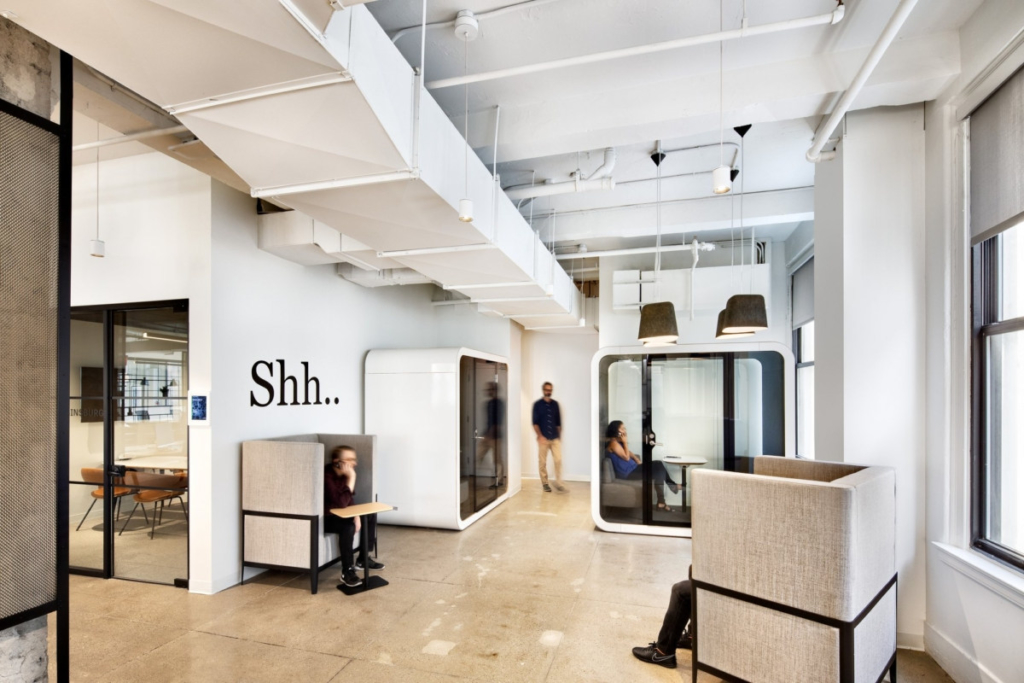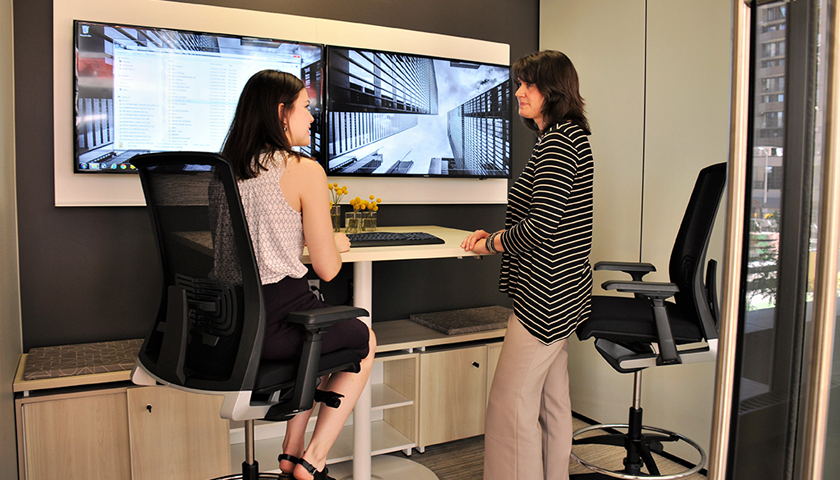In decades past, employers focused on giving their staff designated offices and workstations that afforded them privacy. Employees arrived at their workspace, worked on their solitary project or task and, except for break time, rarely left their individual space. The typical office was designed as a place of isolation because employers believed that a distraction-free office space led to increased productivity and an improved bottom line.
In today’s fast moving business world companies are challenged to be competitive and relevant. The survival of many has been dependent on their ability to innovate; constantly bringing new services and products to consumers who quickly evolve and continue to seek that which is new, better or faster.
How do companies continually produce innovative products and services in today’s world?
Studies have shown that it’s the interaction of people that spurs ideas and innovative thinking. Increased interaction also leads to a sense of “community” within the workplace, giving people the feeling of belonging to and being a meaningful part of the larger collective; cultivating a higher level of job satisfaction. As they say, a happy employee is a productive employee.
What’s more, the advancements of audio and video telecommunication technology and a growing selection of collaborative software has encouraged long distance collaboration between teams around the world – making it increasingly important to provide a space for virtual teams to meet as well.
Modern companies have essentially become large communities of people interacting electronically, and sometimes over long distances, to create innovative products and services. Therefore, a well designed office space should allow people to focus on their own task when needed while providing opportunities to easily connect and collaborate with their teammates – their community.
So, how can the design of office space foster collaboration and innovation?
The following are concepts that have proven successful for many companies:
Team Focused Work Spaces
Instead of placing employees in cubicles or arranging desks in a way that isolates them from one another, team focused work spaces are barrier free and arranged to encourage spontaneous exchange of ideas; all the while allowing for periods of concentration.

Collaboration Zones
By strategically placing collaboration zones throughout the office, employees from different departments or work areas can quickly come together to discuss a project and share ideas. Successful office designs contain a variety of collaborations spaces to accommodate varied numbers of people, and are infused with a variety of technology to aid in the collaboration.

Open Floor Plan
Having an open floor plan encourages interactions between co-workers, increasing connectivity between teams and a heightened sense of community within the workplace. Open floor plans also have fewer fixed construction elements, allowing for the design to be flexible and to adaptable to changing needs over time.

Space Utilization
Collaborative office spaces use space efficiently. Individual concentration zones are sized for user needs with technology at their fingertips and space to focus. Collaboration spaces are also sized depending on their use; ranging from a small area for a quick meeting between two people to a more spacious and relaxed environment for larger groups to meet. Large group collaboration spaces can also be designed to be flexible in their use, so spaces aren’t left vacant for major portions of the day.



